The Many Faces of ‘Dylan’
Todd Haynes' film "I'm Not There," "inspired by the music and many lives of Bob Dylan," shows that art reveals truth when it has the imagination to move away from the imitation of reality.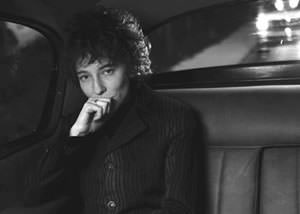
Todd Haynes’ film “I’m Not There,” “inspired by the music and many lives of Bob Dylan,” shows that art reveals truth when it has the imagination to move away from the imitation of reality.
Six actors (Christian Bale, Cate Blanchett, Marcus Carl Franklin, Richard Gere, Heath Ledger and Ben Whishaw) embody varied facets of Dylan, whose name is never mentioned. Each incarnation has a different name and narrative. These nonlinear narratives collide and overlap but remain independent of each other.
Franklin, a 13-year-old African-American, is Woody, a juvenile vagrant who hops boxcars. His beloved guitar is marked “This machine kills fascists.”
Whishaw plays Arthur (the poet Rimbaud as Dylan), seated at a table throughout the film, facing the camera. He is eternally cross-examined by invisible interrogators.
Bale is Jack Rollins, the “Troubadour of Conscience” for a generation. He wears the acoustic guitar and harmonica rig of Dylan’s early years but with his lean, long face more resembles Woody Guthrie.
Ledger is Robbie, a womanizing, self-centered movie star who once played Jack Rollins in a film. Charlotte Gainsbourg plays Claire, Robbie’s wife and mother of his children. Gainsbourg is the emotional center of the Robbie sequences, transmitting, often through silence, the suffering of being caught between her love for Robbie and constant, subtle humiliation and loneliness.
Blanchett, in an exhilarating performance that transcends gender, is Jude Quinn, the “star of electricity.” Jude, in a tapered black suit, with wild hair, hooded eyes and high cheekbones behind dark glasses, is an eerie invocation of Dylan in the mid- ’60s. Blanchett deftly sidesteps the trap of “playing a man.” She cuts to Jude’s wiry cynicism about a world ravenous for celebrity, and the flash-bulb isolation of an intelligent, sensitive artist who sees and feels more than those who throng around him.
The final Dylan figure is Billy (the Kid), played by Gere, a grizzled cowboy. Billy lives on the outskirts of the frontier town Riddle: “Here I’m invisible, even to myself.” Riddle faces annihilation — plans for a six-lane highway through the center of town — in the name of progress.
This shape-shifting extends to Haynes’ kaleidoscopic directorial vision. Grainy black-and-white sequences mingle with shots artificially saturated with color: tender yellow-green fields outside an open boxcar, the deep blue-green of an urban evening, sallow yellow hospital light. Clips of the civil unrest of the ’60s, race riots, John F. Kennedy and Martin Luther King are mixed into the fabric of the film.
The different Dylan figures and their time lines break in upon each other, sometimes for only seconds, reminding us of their parallel existence. Billy looks out over the forested mountains in his Wild West era, sensing an unseen menace. It coalesces into napalm explosions in Vietnam, underscored by the raucous crashes of “All Along the Watchtower.” The explosions draw us through a television screen into Robbie and Claire’s world, revealing a wordless snapshot of their collapsing marriage before the camera abruptly returns us to Billy’s mountains.
The realism of Jack Rollins, or Robbie and Claire, bumps up against surreal images of a massive tarantula crawling across a blank screen, a sperm whale animated in jerky Godzilla fashion, and dirty children with a dead pony. A girl with her head on fire stands ominously amid a crush of rabid fans. Jude Quinn appears in a puff of smoke, in a tribute to “A Hard Day’s Night,” with four dark-suited young men with bowl cuts. They tumble over each other in accelerated, helium-voiced hilarity. When Jude is whisked away by his handlers, the four young men with bowl cuts are seen in the distance, pursued by hordes of screaming girls. And in a brilliant paraphrasing of Dylan’s “going electric” at the Newport Folk Festival in 1965, Haynes conjures up a vision of Jude and his band spraying the stunned audience with machine gun fire.
Carnies, freaks and outcasts filter in and out of the film. Disguise and performance are intertwined. “There’s something sort of freakish, I suppose, in setting someone up on stage apart from all the rest,” says young Woody. He boasts to two hobos of getting his start in a carnival, singing under a banner reading “From Far-Off Lands: Strange Humans!” Jude performs “Ballad of a Thin Man” and is abruptly replaced by a large cage containing Eeka the Geek. The highbrow audience laughs uproariously when the longhaired Geek decapitates a chicken with his teeth. The Halloween shop is open all year in the town of Riddle, and its townspeople wander the streets masquerading as Vikings, pirates, jesters and ghouls. “No town ever loved Halloween like the town of Riddle,” says Billy. “Who a fellow really was never really mattered. … It was my kind of town.” And after suffering a lethal overdose, Jude bobs limply in the sky, tethered by the foot to the top of a circus big top, unable even in death to escape the garish lights below.
“I’m Not There” is enigmatic, sometimes difficult, and answers no questions. Billy is scrambling onto a moving train to flee the authorities when his missing yellow dog, Henry, reappears, streaking through a meadow alongside the tracks. Billy calls to the dog, but she can’t keep up and soon drops out of sight. What we have lost and searched for in vain only comes back to us when we have moved on and can’t turn back. Jude, in words lifted from Dylan’s 1966 interview with Nat Hentoff, says:
“What I’m talking about is traditional music … with all these songs about roses growing out of people’s brains and lovers who are really geese and swans that turn into angels — they’re not going to die. … You’d think these traditional music people would gather that mystery is a traditional fact. These things are so full of mystery … contradictions … chaos, clocks, watermelons, it’s everything. People think I have some kind of fantastic imagination. It gets very lonesome. Traditional music … it’s too unreal to die. … And in that music is the only true valid death you can feel today off a record player. Like everything else in great demand people try to own it. … I think it’s the meaninglessness that’s holy.”
“I’m Not There” is a passionate fugue on the selves we cast off and yet unconsciously retain in our deepest layers. It celebrates mystery, uncertainty and the eternal process of becoming.
Eunice Wong is an actor based in New York City.
Your support matters…Independent journalism is under threat and overshadowed by heavily funded mainstream media.
You can help level the playing field. Become a member.
Your tax-deductible contribution keeps us digging beneath the headlines to give you thought-provoking, investigative reporting and analysis that unearths what's really happening- without compromise.
Give today to support our courageous, independent journalists.
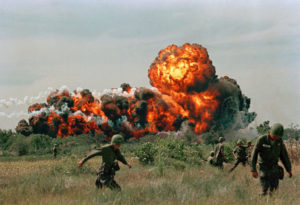
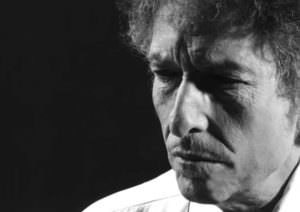
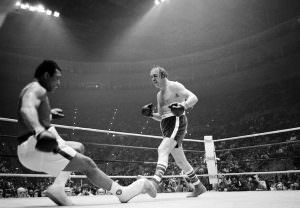
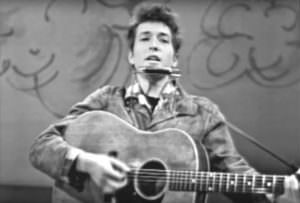

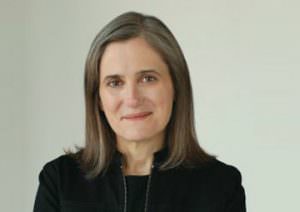
You need to be a supporter to comment.
There are currently no responses to this article.
Be the first to respond.